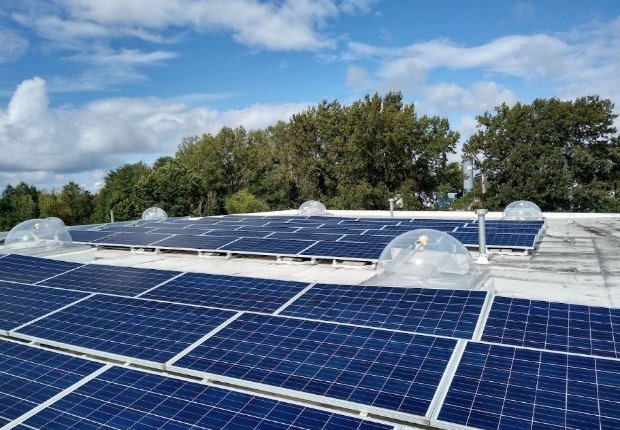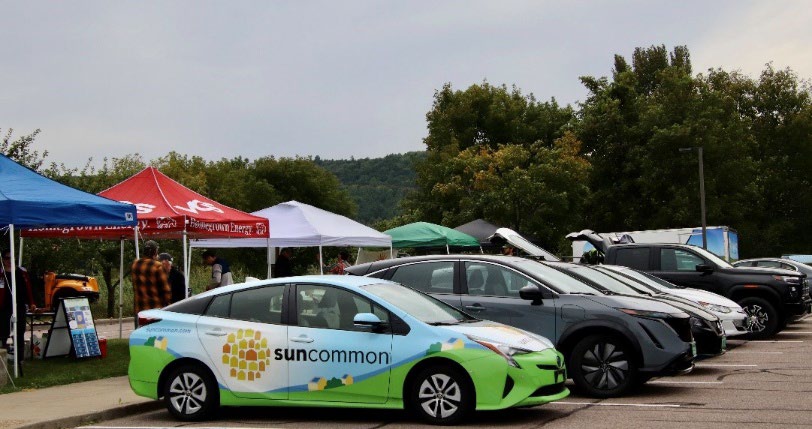Williston is well prepared for emergencies and maintains a Resiliency Hub, which is a community-serving facility augmented to support residents, coordinate communication, and distribute resources during an emergency or other critical event.


Chapter 12
Hazard Mitigation
Introduction
Goals: In 2050, Williston is...
Livable
...because, as the climate changes and weather events become increasingly unpredictable and violent, Williston communicates clearly and often about the state of the town's preparedness and the steps being taken to protect against such events. To ensure that the town meets the defined qualities of livability, it carefully plans its development model to balance growth and population against the town's ability to deliver the services necessary to ensure that the four tenets of the livable commitment—affordable, welcoming, sociable, and beautiful—are met.
Resilient
...because Town planning, in conjunction with other town and state agencies, will monitor and develop actions required to improve and maintain Williston's ability to respond to threats when they occur. This process of "reverse-engineering the future" includes assessing the vulnerability of critical road infrastructure; taking steps to "harden" power and telecommunications infrastructure, including the possibility of burying aerial utilities that are vulnerable to wind and ice load; creating a plan to deal with a possible disruption of the power grid; moving or hardening critical infrastructure, plant and buildings that are vulnerable to extreme flooding events; and other eventualities that come up in the town's ongoing what-if scenario planning exercises. Through careful and deliberate planning, Williston has a process in place to continually monitor and assess the town's threat horizon. Through regularly conducted what-if scenario exercises, the town's various agencies and town residents engage jointly to assess the potential impact of a wide range of potential threat scenarios.
Equitable
...because Williston's plan for dealing with natural disasters will be a town plan, meant to serve the entire community with special attention paid to the most vulnerable members of the community. These include elderly people, people with disabilities, people with medical needs, people with limited mobility who may rely on social services. Vulnerable populations are more susceptible to the impacts of disasters and may experience more long-term effects with a loss of their social support networks, in addition to the disruption brought about by the natural disaster itself. Other residents may be considered vulnerable due to their everyday living conditions or based on their proximity to hazard-prone areas. Vulnerable populations are invited to participate in planning, and they are prioritized in emergency preparedness and response.
Three Things to Know
HAZARD MITIGATION PLANNING HELPS THE TOWN ADAPT TO A CHANGING CLIMATE
The Hazard Mitigation Plan considers the potential impact of climate change on the hazards the Plan addresses.
EPIDEMICS AND INFECTIOUS DISEASE ARE INCREASINGLY PROMINENT HAZARDS
The COVID 19 pandemic raised awareness of infectious disease hazards. Williston's people and the town administration learned much from its recent lived experience with COVID 19. Having a comprehensive and robust response strategy will make the town better prepared to face future pandemics.
WILLISTON HAS DONE COMMENDABLE WORK IN ITS PLANNING AND IMPLEMENTATION OF HAZARD MITIGATION
The Town has built flood resilience through its land use regulations, conservation and stormwater programs; adopted and is implementing an Emerald Ash Borer Preparedness Plan; maintains a Hazard Mitigation Plan and a Local Emergency Operations Plan.
Three Things Public Engagement Told Us
PEOPLE VALUE WILLISTON'S PUBLIC WORKS AND PUBLIC SAFETY SERVICES.
People expressed appreciation for the Williston's Fire and Police Departments, and Department of Public Works' winter road maintenance and efficient plowing after snowstorms.
STORMWATER RUNOFF IS A CHALLENGE TO THE TOWN'S FLOOD RESILIENCY.
Related to energy and climate, impervious surfaces and stormwater runoff was noted as a contributing factor to flooding, and flood resiliency in general was noted as a challenge for the town.
ENERGY AND CLIMATE RESILIENCE SHOULD BE THE TOWN'S #1 PRIORITY.
People voiced that the town should prioritize building infrastructure resilient to severe weather and the town should improve its "temperature resilience." In the Roundtable activities, 41% of participants noted that energy and climate resilience should be the town's #1 priority.
Hazard Mitigation Planning Helps the Town Adapt to a Changing Climate
Epidemics and Infectious Disease are Increasingly Prominent Hazards
Extreme Heat
Invasive Species
Town Mitigation Actions
Objectives, Strategies and Actions
Objectives
Williston plans appropriately for growth with a focus on climate change resilience.
Williston's existing and planned municipal infrastructure is well-protected from hazards.
Williston power systems and grid are resilient and can withstand severe weather events with minimal disruptions to service.
Stormwater management systems and infrastructure are resilient.
Flooding and fluvial erosion results in minimal damage to structures and infrastructure.
The town facilitates strong and caring community relationships and neighbors help each other out.
The town maintains effective communication channels.
Town 'knowledge infrastructure' is in place that helps guide people, raises awareness of issues and what to do.
The town has communication networks with vulnerable populations and prioritizes them during emergencies.
Strategies
Ensure that local plans are regularly updated and well-coordinated with Regional, State, and Federal Plans.
Maintain and develop effective, resilient communication strategies.
Maintain and strengthen regulatory requirements of the National Floodplain Insurance Program (NFIP).
The Town will maintain accurate and updated inventories of all its assets, and proactively plan to fund asset repairs and replacements, with the goal to maintain infrastructure that is resilient to natural and human-caused hazards.
Ensure the Town's Land Use Regulations support climate change resilience goals.